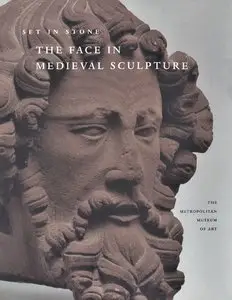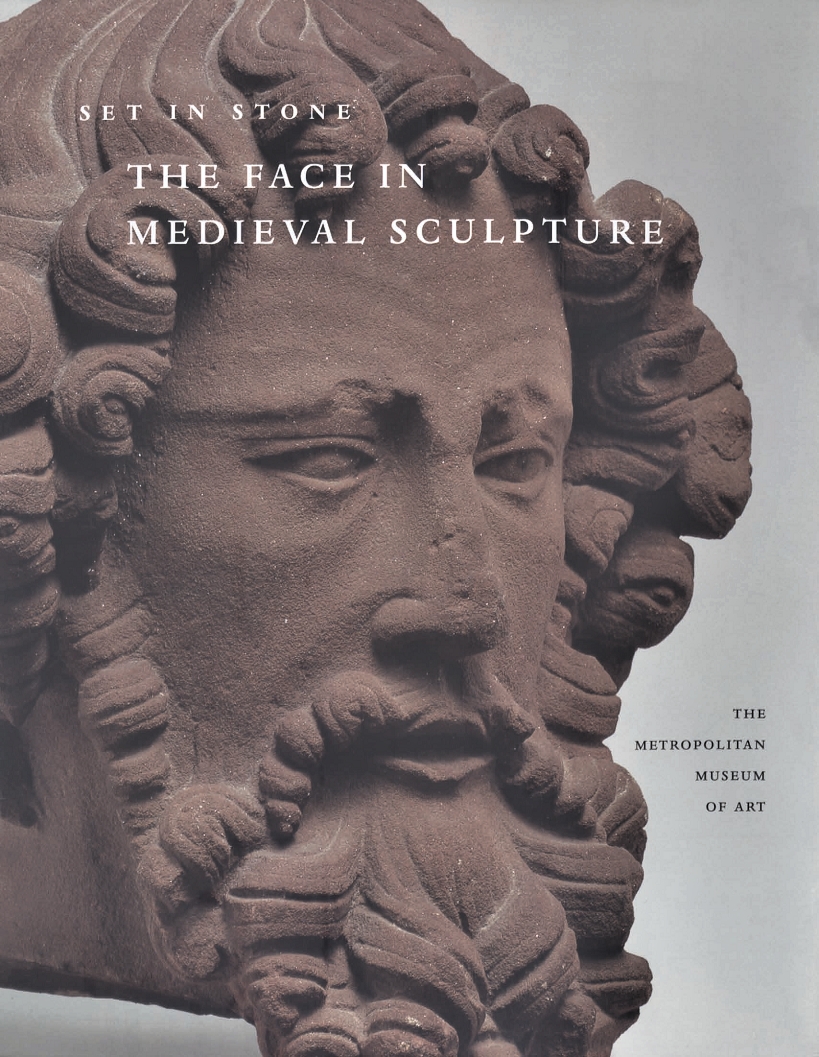Little, Charles T., "Set in Stone: The Face in Medieval Sculpture"
Met.Museum of Art/Yale Un Pr | 2006 | ISBN: 1588391922/0300117817 | English | PDF | 222 pages | 34.75 Mb
Met.Museum of Art/Yale Un Pr | 2006 | ISBN: 1588391922/0300117817 | English | PDF | 222 pages | 34.75 Mb
Faces in medieval sculpture are explorations of human identity, marked not only by evolving nuances of style but also by ongoing drama of European history. The eighty-one sculpted heads featured in this beautifully illustrated volume provide a sweeping view of the Middle Ages, from the waning days of the Roman Empire to the Renaissance. Each masterful sculpture bears eloquent witness to its own history, whether it was removed from its original context for ideological reasons or because of changing tastes.
As a work of art, the sculpted head is a particularly moving and vivid fragment; it often seems to retain some part of its past, becoming not unlike a living remnant of an age. In antiquity and throughout the Middle Ages it was generally believed that the soul resided in the head, as articulated by Plato in the Timaeus. The head was thus understood to be a center of power, the core of individual identity, and the primary vehicle for human expression, emotion, and character.
Many medieval sculpted heads became separated from their settings—often churches or ecclesiastical monuments—by the seemingly endless destruction and displacement of art works in Europe during and after the Middle Ages. Political and religious ferment, neglect, shifts in taste, and simply time itself: all exacted a heavy toll. During the French Revolution, in particular, legions of stone figures lost their heads in a course of mutilation that paralleled the infamous guillotine. In many cases the artistic or aesthetic merits of a given fragment are all that remain of the original work's context, meaning, and significance. Some heads survived precisely because of their innate beauty, or perhaps out of reverence for the grand monuments to which they once belonged.
Seven thematic sections retrace the history of these heads using both traditional art-historical methods, such as connoisseurship and archaeology, as well as the latest scientific technologies. In his introduction to the volume, Charles T. Little provides an overview of these general themes, which include Iconoclasm, The Stone Bible, and Portraiture. An essay by distinguished scholar Willibald Sauerländer discusses the complex and fascinating issue of physiognomy in medieval art, from menacing or carnivalesque grotesques to the beatific visages of saints and apostles. Sauerländer presciently observes, "To learn about 'the fate of the face' in the Middle Ages—a period torn by strife, faith, and fear—may prove today to be more than a mere art-historical concern."
Introduction : Facing the Middle Ages / Charles T. Little –
The fate of the face in medieval art / Willibald Sauerländer –
Iconoclasm : a legacy of violence / Stephen K. Scher –
The limestone project : a scientific detective story / Georgia Wright and Lore L. Holmes –
The stone bible : faith in images / Jacqueline E. Jung –
What are marginalia? / Janetta Rebold Benton –
Sculpting identity / Stephen Perkinson –
Gothic Italy : reflections of antiquity / Christine Verzar and Charles T. Little –
Reliquary busts : "a certain aristocratic eminence" / Barbara Drake Boehm.
The fate of the face in medieval art / Willibald Sauerländer –
Iconoclasm : a legacy of violence / Stephen K. Scher –
The limestone project : a scientific detective story / Georgia Wright and Lore L. Holmes –
The stone bible : faith in images / Jacqueline E. Jung –
What are marginalia? / Janetta Rebold Benton –
Sculpting identity / Stephen Perkinson –
Gothic Italy : reflections of antiquity / Christine Verzar and Charles T. Little –
Reliquary busts : "a certain aristocratic eminence" / Barbara Drake Boehm.
Charles T. Little is Curator in the Department of Medieval Art and The Cloisters, The Metropolitan Museum of Art, New York.
Willibald Sauerländer is former Director of the Zentralinstitut für Kunstgeschichte, Munich.
Willibald Sauerländer is former Director of the Zentralinstitut für Kunstgeschichte, Munich.
The Burlington Magazine
"The handsome catalogue, with its excellent color illustrations, a probing essay by Willibald Sauerlander, investigative catalogue entries, concise thematic discussions, extensive bibliography, and a thorough index, is a model of its kind. Its subject is well served by the expertise of the authors and the astute editorial supervision, so that this volume is not only valuable for future reference but is also easy to use in the exhibition itself."
Choice Reviews Online
"The book enjoys the excellent production values of the Metropolitan Museum in high-quality images. Though geared toward the specialist, these objects in this exhibition have a natural attraction that also fosters an appeal to the general audience."
"The handsome catalogue, with its excellent color illustrations, a probing essay by Willibald Sauerlander, investigative catalogue entries, concise thematic discussions, extensive bibliography, and a thorough index, is a model of its kind. Its subject is well served by the expertise of the authors and the astute editorial supervision, so that this volume is not only valuable for future reference but is also easy to use in the exhibition itself."
Choice Reviews Online
"The book enjoys the excellent production values of the Metropolitan Museum in high-quality images. Though geared toward the specialist, these objects in this exhibition have a natural attraction that also fosters an appeal to the general audience."





